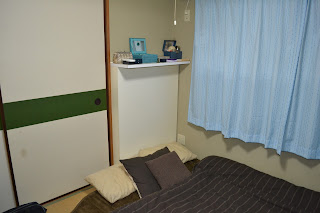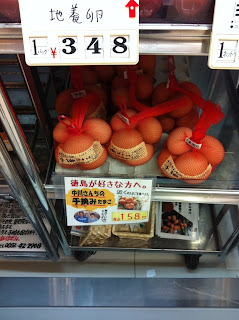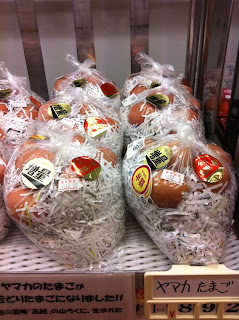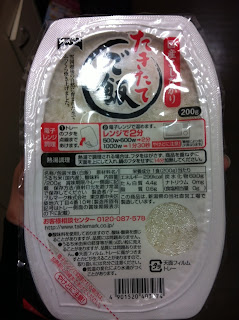Prior to moving to Japan, I'd long been of the opinion that learning a language would be comparatively "easy" if you were fully immersed in it, i.e. living in that country. Having lived in Japan now for a year-and-a-half and having only acquired a basic functional level of language proficiency I can safely say I have debunked this theory. There are several reasons behind my rather average skills in Japanese - and I'd like to discuss a few of them, quite honestly, here:
1)
Other Foreigners. Dealing with culture shock in a country that is so very different to your own can really take it out of you and at the end of a long, tiring and difficult day the last thing you want to do is be surrounded my more Japanese-ness. It's in these moments that you seek out other English-speakers, people who share your cultural knowledge and can relate to your experiences. The friendships you can make while living abroad are great - a true lifeline at times - but they do nothing to assist your acquisition of a second language. Why? Because together all you do is speak English! It's comforting, it's easy and it makes you feel like you're at home! And once forged, it's difficult to give up this safety blanket. It makes you feel good to hang around these people, so you keep choosing to hang around these people - sometimes at the expense of having true communicative experiences with Japanese people - which is hardly conducive to learning Japanese...
2)
The Internet # 1 - Online TV. But you can't spend every minute with friends can you? What about the times that you are home alone, can't you watch Japanese TV and practise your listening skills that way? Sure, I could, but at the end of a trying day of not being able to understand a word around me, I like to come home put on my favourite show and relax while eating dinner. Watching Japanese TV is just frustrating. If you don't believe me, just try watching a foreign language film without turning on the English subtitles - there's only so much you can deduce from the action onscreen. But isn't Japanese TV weird and quirky and inherently interesting? Well, here's to smashing another myth, but no, it's not really. There are a lot of Home and Away-esque dramas or panel talkshows. I'm yet to see a screening of Iron Chef (cancelled in Japan quite some years ago) or one of those wacky gameshows where people have to run through an obstacle course covered in dishwashing liquid. They might exist on the internet, but they sure as hell don't exist on NHK's regular weekly programming, so far as I can tell.
3)
The Internet # 2 - Skype. Let's presume I don't have English-speaking friends and actually enjoy watching Japanese TV for a second... And then let's imagine that after a crappy day when all you want to do is go home (to Australia) you have no way of contacting your friends or family. Kind of impossible to imagine isn't it? Especially given Skype and long before that, the humble telephone. I might be thousands of miles away from home, but I'm only ever really the click of a mouse away from seeing my mother's face or hearing my brother's voice. And that's not to mention Facebook, Viber SMS, email etc. We are in more constant contact with people now than we've ever been and when things don't feel right (or sometimes when they feel so right you just have to talk about it) in my immediate world, ask yourself honestly, who am I going to turn to - my Mum via Skype or my Japanese study book?
4)
My Job. My job title in Japan is this: Assistant Language Teacher (ALT) for the Japanese Exchange Teaching (JET) Program. I am paid to be a walking, talking example of "foreignness" in my schools. Sure, in Junior High School I get to stand at the front of the class and deliver lessons that I have had a hand in creating in order to teach the students English grammar or vocab. But mostly, and especially at Elementary School, it is my job to foster "grassroots internationalism". What the f*** is that? - you might ask. Well, in a society as homogeneous as Japan (where 98% of the population are Japanese) it's my job to expose people to 'the outside world' simply by becoming the living embodiment of the Western world. Sometimes that means I'm not even expected to be an ambassador from Australia, but a woman wise in the ways of the world at large.
You want me to teach first-graders about Thanksgiving? No problem, let me just Google what that is and let's make some hand-turkeys in class. And of course, speaking Japanese with my students isn't the point, at all. I'm expected to speak English with them. To encourage them to want to speak English with me. Which means that all day at work (minus some occasions in the staffroom talking to other teachers) I speak English, I'm expected to speak English. Which is great for me - I know how to speak English! After 29 years I actually find it very easy! It also plays right into my comfort zone, and sadly, lessens my motivation to learn another language to communicate in.
5)
The Immensity of the Task. Learning Japanese can be really overwhelming. As if speaking and listening wasn't hard enough, there are also 2 syllabaries (katakana and hiragana) to learn plus a couple of thousand kanji characters if you wish to be able to read anything. So far, my studies have focussed on speaking skills. I am learning vocab and sentence structure, and truthfully, finding that difficult enough. Understanding spoken Japanese (especially at native speed) is hard - to the point where eventually you just kind of tune it all out as incomprehensible. One of my friends admitted to me that Japanese to her sounds like white noise - sure she might understand a word here or there and the general gist of the conversation, but she has accepted the fact that she might never understand the rules of grammar or the pronunciation of conjugated verbs enough to decipher a whole sentence. And I completely agree with her. After a while, you just get used to not understanding. While it sucks to be illiterate at this age and with my level of education, the task at hand can seem so overwhelming that it (figuratively) stops you in your tracks.
5)
Motivation. At the end of the day, it really comes down to my motivation. I moved to Japan mainly to achieve the goal of living abroad. It was never my intention to become fluent in Japanese, nor an expert in the field of Japanese culture. I just wanted the adventure of trying something new and stepping outside the box. And so, even though I take weekly Japanese lessons, the motivation to truly succeed at this language acquisition isn't there. I rarely study on my own throughout the week. If I can speak in English instead of Japanese I will choose to do so. If I go to a restaurant I can either point at the picture of the food I want or ask one of my Nihongo-jouzu (good at Japanese) friends to order for me. I have a supervisor that I call on for technical conversations like banking or taxes. I am not fluent in Japanese, nor could I ever realistically hope to be, but I am 'caveman-style' basically functional. I've discovered that I can get by
without actually learning much Japanese. And the sad reality is that maybe that's enough for me...
































